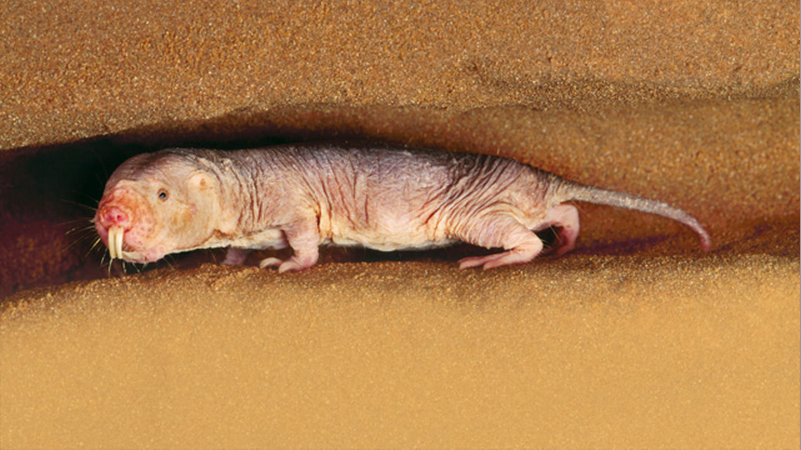It may not be much to look at, but the naked mole rat is impressive in its long and active lifespan. Rodents have an 85 percent genetic similarity to humans – so whatever is behind the naked mole rat’s longevity may hold the key to longer and healthier lives for us as well. Researchers believe that this small mammal’s high levels of brain-protecting protein are the secret to its survival.
The naked mole rat is a subterranean rodent native to East Africa. It stands out in comparison to the common rat, which lives an average of three years, in its 10 to 30 year lifespan. Not only this, but compared to humans, the naked mole rat’s body shows little decline due to aging. It also maintains high activity, bone health, reproductive capacity, and cognitive abilities throughout its life.
Related Stories:
- New Lab Aims To Discover Secret Of Super-Sonar Bats
- Will Sea Anemone Contribute To Human Organ Repair?
Protein behind their longevity?
The researchers, from Tel Aviv University’s Department of Zoology, the University of Texas Health Science Center and the City College of New York are working together to determine whether the naked mole rat’s unusually high levels of NRG-1, a neuroprotecting protein, is behind the naked mole rat’s three-decade life span.
NRG-1 is concentrated in the cerebellum, the part of the brain important to motor control. The protein protects the integrity of neurons and is essential for normal brain functioning.
Genetic analysis comparing the mole rat with several other rodent species revealed that high levels NRG-1 in adults correlated with a longer life span. Of all the species the researchers studied, the naked mole rat had the most plentiful and long-lasting supply of the protein. It also maintained a consistent level throughout its lifetime.
Sign up for our free weekly newsletter
SubscribeDr. Huchon, an evolutionary biologist, joined the project to lend her expertise on rodent genetics. She studied seven species of rodents, including guinea pigs, mice, and mole rats, to determine the genetic relationships between them. Her analysis revealed that the correlation between life span and NRG-1 levels was independent of evolutionary lineage — meaning that it was unique to the naked mole rat, not a common trait of these rodent species.
Future research
This discovery is an important first step towards understanding how aging — and the NRG-1 protein in particular — functions in these interesting animals, says Dr. Huchon. Future research could reveal how NRG-1 helps to maintain neuron integrity. This could lead to discoveries about human aging.
The naked mole rat, a burrowing rodent that lives in colonies much like those of ants, has already proven to be an excellent tool for aging and biomedical research because it is resistant to cancer and maintains protein integrity in the brain despite being exposed to oxidative damage, Dr. Huchon says.
This research was published in the journal Aging Cell. The scientists involved are Dr. Dorothee Huchon of Tel Aviv University’s Department of Zoology, Prof. Rochelle Buffenstein of the University of Texas Health Science Center in San Antonio, and Dr. Yael Edrey of the City College of New York.
Related posts

Israeli Medical Technologies That Could Change The World

Harnessing Our Own Bodies For Side Effect-Free Weight Loss

Missing Protein Could Unlock Treatment For Aggressive Lung Cancer




Facebook comments